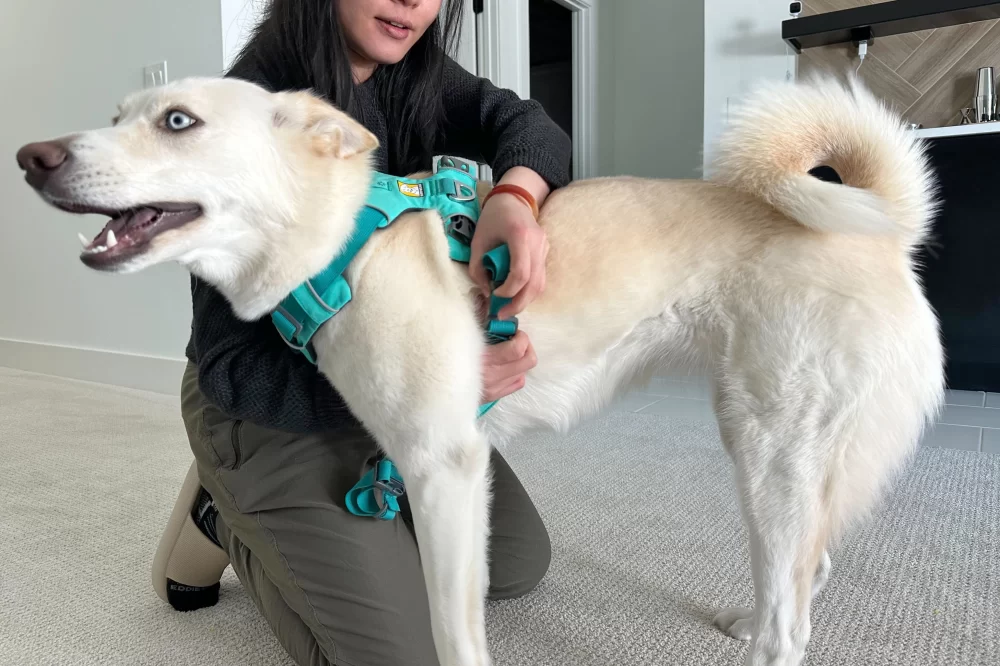- Importance of Proper Collars and Harnesses for Small Breeds
- Key Features to Look For in Small Dog Collars and Harnesses
- Types of Collars and Harnesses Suitable for Puppies
- Real-Life Examples from Small Dog Owners
- Tips for Measuring and Fitting Small Dog Collars and Harnesses
- Why Choose Hidden Brook Veterinary for Your Small Dog Gear
1. Importance of Proper Collars and Harnesses for Small Breeds
Small breeds and puppies require special consideration when selecting collars and harnesses. Their delicate frames and sensitive necks mean that ill-fitting or heavy equipment can cause discomfort, injury, or even respiratory problems. Unlike larger dogs, small breeds are more prone to tracheal collapse and skin irritation if the collar exerts too much pressure.
Proper collars and harnesses distribute pressure evenly and provide secure control during walks and outings, enhancing safety without sacrificing comfort. Choosing the best dog collars and harnesses for small breeds and puppies helps ensure your little companion can enjoy outdoor adventures safely and happily.
Health and Safety Considerations
Collars that are too tight or harnesses that restrict movement can lead to issues like chafing, sores, or breathing difficulties. For puppies, whose bones and muscles are still developing, the right gear supports healthy growth and prevents early injuries.
2. Key Features to Look For in Small Dog Collars and Harnesses
When searching for the best dog collars and harnesses for small breeds and puppies, consider these essential features:
Adjustability
Small dogs and puppies grow quickly, so adjustable collars and harnesses that can be customized to fit snugly without being tight are ideal. This feature prolongs the lifespan of the gear and ensures continuous comfort.
Lightweight and Breathable Materials
Materials like soft nylon, neoprene, or padded mesh prevent irritation and overheating. Lightweight gear also prevents your dog from feeling burdened during walks.
Secure Fastenings
Look for collars and harnesses with strong but easy-to-use buckles or clips that prevent accidental release while allowing quick removal in emergencies.
Design and Safety Elements
Reflective stitching or bright colors improve visibility during low-light conditions. A harness design that avoids pressure on the throat and promotes natural movement is especially important for small breeds.
3. Types of Collars and Harnesses Suitable for Puppies
Understanding the differences between collars and harnesses helps you select the right product for your puppy’s needs:
Flat Buckle Collars
These are simple, adjustable collars suitable for puppies who are still learning leash manners. They come in various soft materials and lightweight designs.
Martingale Collars
Designed to prevent slipping, martingale collars tighten slightly when the dog pulls but do not choke, making them safe for puppies prone to slipping out of traditional collars.
Step-In Harnesses
Easy to put on, step-in harnesses distribute pressure across the chest rather than the neck, reducing the risk of injury. This style is great for small breeds and puppies with delicate throats.
Vest Harnesses
Offering full coverage and padding, vest harnesses are comfortable for extended wear and can help calm anxious puppies by providing gentle pressure.
4. Real-Life Examples from Small Dog Owners
Consider the story of Mia, a toy poodle puppy whose owner struggled to find a harness that fit well without restricting movement. After trying several brands, they discovered a lightweight, adjustable step-in harness recommended by Hidden Brook Veterinary. Mia’s walks became more enjoyable, and the harness prevented any neck strain or skin irritation.
Another example is Charlie, a Chihuahua who was prone to slipping out of collars. Switching to a martingale collar allowed his owner peace of mind during daily walks, knowing Charlie was secure without discomfort. These cases underscore the importance of choosing the right collar or harness tailored for small breeds and puppies.
5. Tips for Measuring and Fitting Small Dog Collars and Harnesses
Proper fit is critical for both comfort and safety. Here are some practical tips:
Measure Accurately
Use a soft measuring tape to measure around your dog’s neck for collars, and around the chest just behind the front legs for harnesses. Always allow space for two fingers between the collar or harness and your dog’s skin to ensure it’s snug but not tight.
Check Adjustability
Make sure the collar or harness can be adjusted as your puppy grows or if your dog’s weight fluctuates.
Observe Movement
After fitting, observe your dog’s movement and behavior. If they seem uncomfortable, scratch excessively, or try to remove the gear, reassess the fit or try a different style.
6. Why Choose Hidden Brook Veterinary for Your Small Dog Gear
For the best dog collars and harnesses for small breeds and puppies, Hidden Brook Veterinary offers expert advice and a curated selection of products designed with your pet’s comfort and safety in mind. Their knowledgeable team helps you find gear that suits your dog’s size, breed, and lifestyle, ensuring a perfect fit every time.
Beyond just selling collars and harnesses, Hidden Brook Veterinary provides guidance on proper use, fitting tips, and health considerations related to your dog’s equipment. For small dog owners wanting trusted, high-quality gear and professional support, Hidden Brook Veterinary is a reliable partner in caring for your furry friend.












